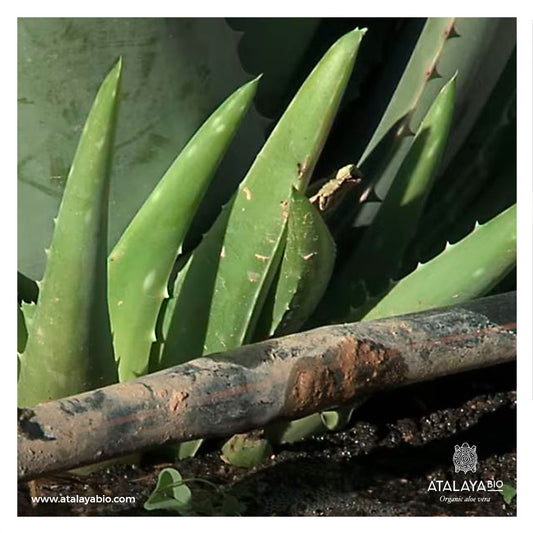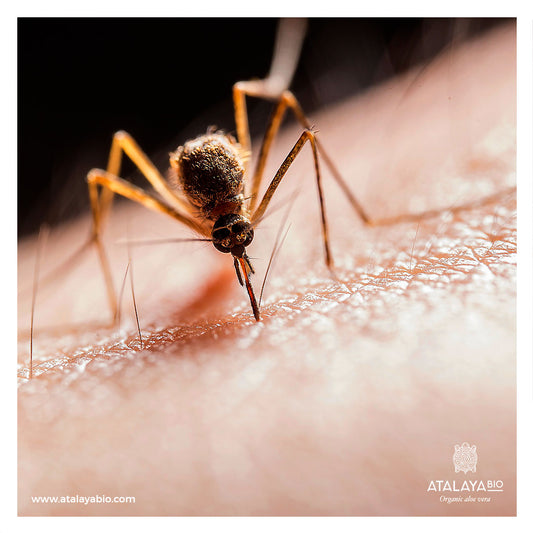Our articles

Two Key Climatic Factors in Aloe Vera Farming
On the occasion of the celebration of World Water Day, we want to talk you about the importance of managing water resources in agriculture, as well as exposing the origin...
Two Key Climatic Factors in Aloe Vera Farming
On the occasion of the celebration of World Water Day, we want to talk you about the importance of managing water resources in agriculture, as well as exposing the origin...

Avoid and relieve insect bites
Organic aloe vera gel is an effective solution against mosquito and other insect bites. Just applying a small amount on the bite, it rapidly calms and relieves itching, reducing inflammation,...
Avoid and relieve insect bites
Organic aloe vera gel is an effective solution against mosquito and other insect bites. Just applying a small amount on the bite, it rapidly calms and relieves itching, reducing inflammation,...

Aloe, Aloins and Hydroxyanthracene Derivatives
Hydroxyanthracene derivatives (HADs) are phenolic compounds found in aloe vera as well as in everyday vegetables such as iceberg lettuce, green beans, cabbages, etc. Among aloe vera HADs we find...
Aloe, Aloins and Hydroxyanthracene Derivatives
Hydroxyanthracene derivatives (HADs) are phenolic compounds found in aloe vera as well as in everyday vegetables such as iceberg lettuce, green beans, cabbages, etc. Among aloe vera HADs we find...

The only biodynamic aloe vera plantation of Eur...
ATALAYA BIO is the only organic aloe vera plantation of Europe in Natura 2000 Network. The main benefits from the products grown in the Natura 2000 Network areas are: purity...
The only biodynamic aloe vera plantation of Eur...
ATALAYA BIO is the only organic aloe vera plantation of Europe in Natura 2000 Network. The main benefits from the products grown in the Natura 2000 Network areas are: purity...

Immune system, defenses and healthy balanced diet
Providing the recommended daily dose of each vitamin helps our body stay strong and active, since each of them plays an important role within our metabolism. Vitamins, from the Latin...
Immune system, defenses and healthy balanced diet
Providing the recommended daily dose of each vitamin helps our body stay strong and active, since each of them plays an important role within our metabolism. Vitamins, from the Latin...

The Real Aloe Vera Soap
In that varied ecosystem of natural soaps with ecological seals, are they all real aloe vera soaps? What distinguishes ATALAYA BIO soaps from the others? What do our soaps offer...
The Real Aloe Vera Soap
In that varied ecosystem of natural soaps with ecological seals, are they all real aloe vera soaps? What distinguishes ATALAYA BIO soaps from the others? What do our soaps offer...
